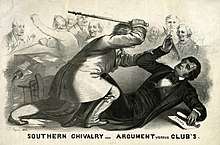Gutta-percha
This article needs additional citations for verification. (November 2016) |

Gutta-percha is a tree of the genus
The word "gutta-percha" comes from the plant's name in Malay: getah translates as "latex" and percha (perca) means "scrap" or "rag".
Description

P. gutta trees are 5–30 metres (20–100 ft) tall and up to 1 m (3 ft) in trunk diameter. The leaves are
In Australia, gutta-percha is a common name specifically used for the euphorbiaceous tree Excoecaria parvifolia, which yields an aromatic, heavy, dark-brown timber.
Chemistry

Chemically, gutta-percha is a
Uses
Historic

Long before gutta-percha was introduced into the Western world, it was used in a less-processed form by the natives of the Malaysian archipelago for making knife handles, walking sticks, and other purposes. The first European to study this material was John Tradescant, who collected it in the far east in 1656. He named this material "Mazer wood". William Montgomerie, a medical officer in imperial service, introduced gutta-percha into practical use in the West. He was the first to appreciate the potential of this material in medicine, and he was awarded the gold medal by the Royal Society of Arts, London in 1843.[4]
Scientifically classified in 1843, it was found to be a useful natural
Electrical
Gutta-percha latex is biologically inert, resilient, and is a good electrical insulator with a high dielectric strength.[9]
By 1845, telegraph wires insulated with gutta-percha were being manufactured in the UK. It served as the insulating material for early undersea telegraph cables, including the first
The dielectric constant of dried gutta-percha ranges from 2.56 to 3.01. Resistivity of dried gutta-percha ranges from 25×1014 to 370×1014 Ω⋅cm. [13]
Since about 1940, polyethylene has supplanted gutta-percha as an electrical insulator.[14]
Other

In the mid-19th century, gutta-percha was used to make furniture, notably by the Gutta Percha Company, established in 1847.[5] Several of these ornate, revival-style pieces were shown at the 1851 Great Exhibition in Hyde Park, London. The company also made a range of utensils.[15]
The "
Gutta-percha was used in canes and walking sticks. In 1856, United States Representative Preston Brooks used a cane made of gutta-percha as a weapon in his attack on Senator Charles Sumner.[18]
In the 1860s, gutta-percha was used to reinforce the soles of football players' boots before it was banned by The Football Association in the first codified set of rules in 1863.[19]
Gutta-percha was briefly used in bookbinding until the advent of vulcanization.[20]
The wood of many species is also valuable.[citation needed]
Today
Art
Gutta-percha is used as a resist in silk painting,[21][22] including some newer forms of batik.
Dentistry

The same bioinertness that made it suitable for marine cables also means it does not readily react within the human body. It is used in a variety of surgical devices and during
Substitutes
Gutta-percha remained an industrial staple well into the 20th century, when it was gradually replaced with superior synthetic materials such as
See also
- Natural rubber
- Gutta-percha Boy, a 1957 Soviet drama film
References
- ISBN 8187224991
- ^ ISBN 978-3-319-92387-1.
- ISBN 978-81-312-2181-5.
- ^ a b Harvey Wickes Felter and John Uri Lloyd. "Gutta-Percha-: An Untold Story. Prakesh et al. ~2001 Endodontology". King's American Dispensatory.
- ^ a b c Bill Burns, The Gutta Percha Company, atlantic-cable.com, accessed 6 October 2010.
- ^ Tully, John (2011). The Devil's Milk. NYU Press.
- ISBN 9781786303745.
- Project MUSE 367792.
- ISBN 978-93-5250-048-2.
- ^ The Atlantic Telegraph: Its History, from the Commencement of the Undertaking in 1854, to the Sailing of the "Great Eastern" in 1866. Bacon and Company. 1866. p. 108.
- ISBN 9780061985294.
- ^ Prescott, George Bartlett (1881). Electricity and the Electric Telegraph. D. Appleton. p. 956.
- ^ Curtis, H.L. Dielectric Constant, Power Factor and Resistivity of Rubber and Gutta_Percha (PDF) (Report). United States N.I.S.T.
- ISBN 978-1-78630-374-5.
- ^ Great Exhibition (1851) Reports by the Juries on the Subjects in the Thirty Classes Into which the Exhibition was Divided: Reports, classes XXIX, XXX. Vol. 4. London): Spicer Brothers. 1852. p. 1740.
- ISBN 978-0-7432-4976-8.
- ISBN 978-1-7346276-1-9.
- ISBN 978-0-313-08174-3– via Google Books.
- ^ McInnes, Paul (16 June 2022). "'Faster, sportier, fairer': are football's proposed new law trials a good idea?". The Guardian. Retrieved 1 October 2023.
- ISBN 978-1-56792-722-1.
- ISBN 0823048284
- ISBN 0715301578
- PMID 266025.
External links
- Germplasm Resources Information Network: Palaquium
- Gutta-percha on the Transatlantic cable site
- The Gutta Percha Company on the History of the Atlantic Cable site
- "The New Philippine Currency". Annual Reports of the War Department for the Fiscal Year Ended June 30, 1903 - Report of the Philippine Commission. Vol. VI. Washington, D.C.: U.S. Government Printing Office. 1904. pp. 388–411. OCLC 220674586.
